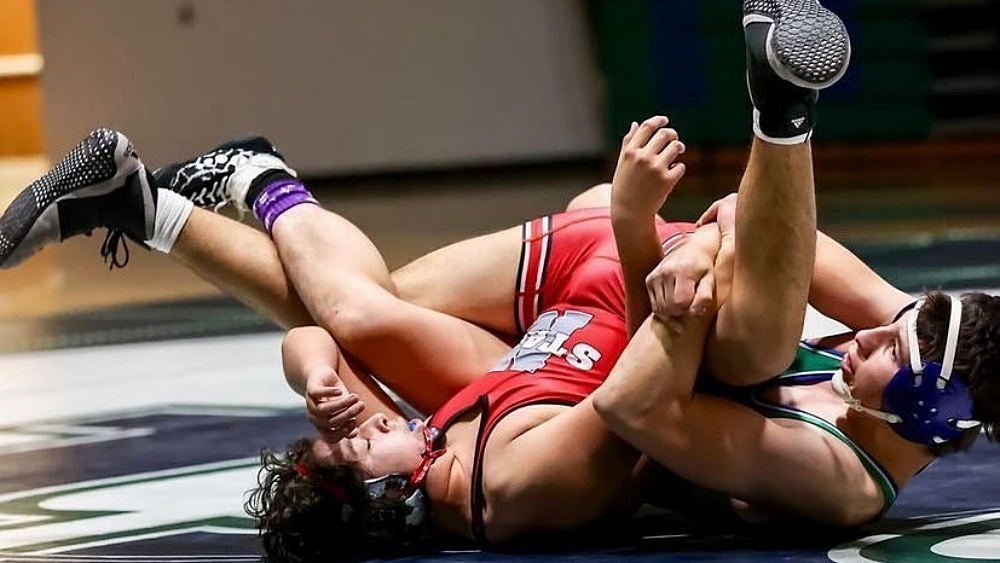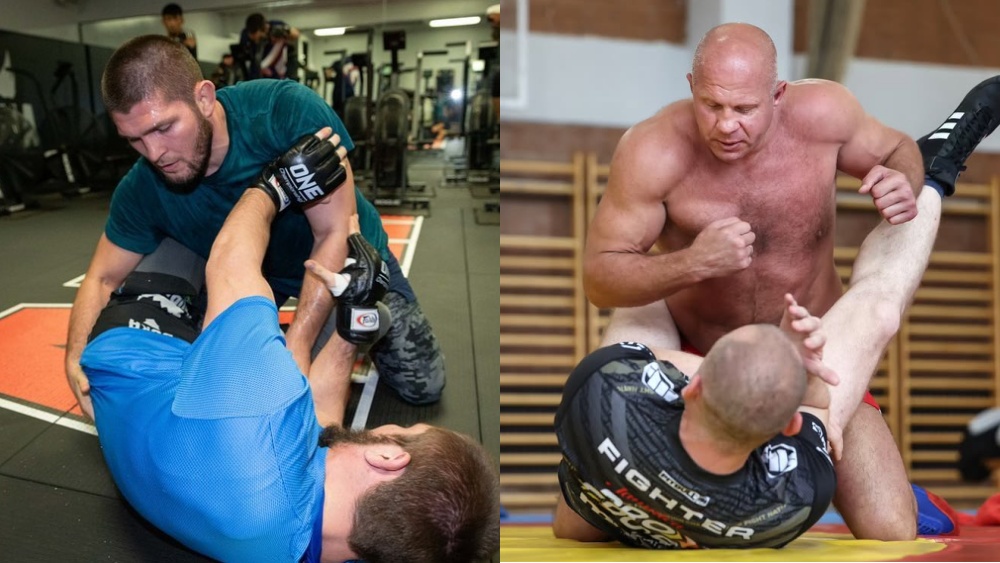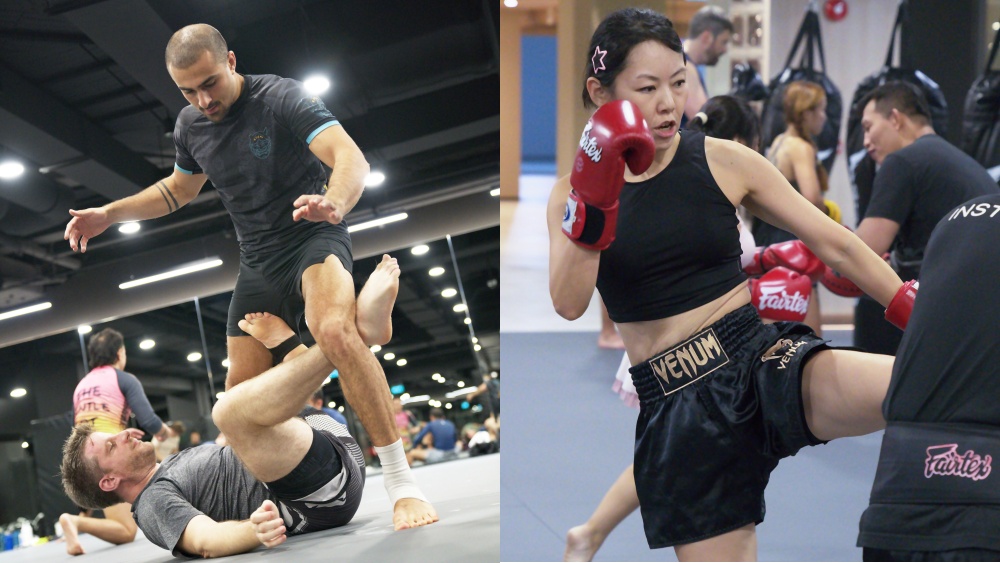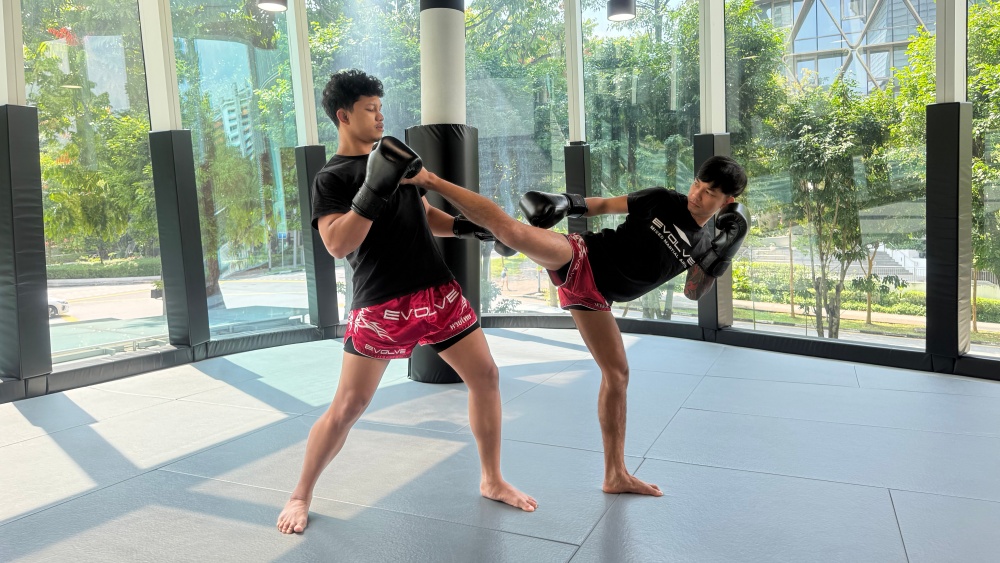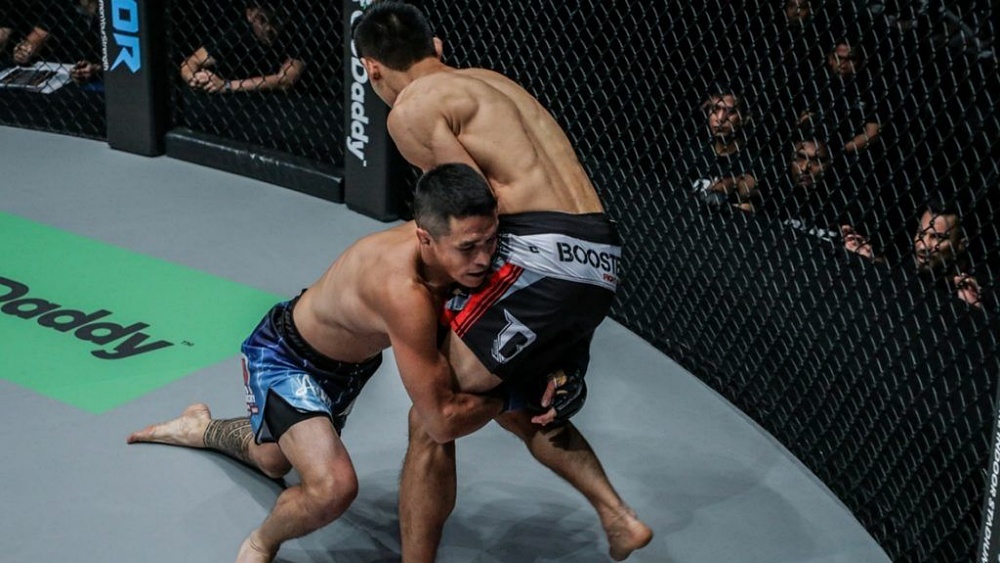The spladle is a defensive move used in wrestling, typically to fight off single-leg takedowns. When done correctly, it’s a pinning technique that puts your opponent’s shoulders on the canvas. The technique is just as effective in mixed martial arts for defending against takedowns (especially when your back is against the cage), and it can be used to set up submissions like the twister.
Wade Schalles, an NCAA Division I champion in the 1960s, is credited with creating the technique, and it has been used ever since.
The spladle involves trapping your opponent’s legs, rolling them over, and stretching their legs in an uncomfortable way that can lead to inexperienced grapplers tapping out. Getting caught in a spladle is one of the most awkward things you can experience in MMA or wrestling. The position also leaves you very vulnerable to ground strikes.
Breaking Down How The Spladle Is Used In Mixed Martial Arts
When executed correctly, the spladle puts opponents in an awkward position that’s quite difficult to escape while putting lots of pressure on their body and neck, hindering their ability to breathe.
It’s been used in wrestling for decades, and it quickly carried over into MMA when the sport started gaining traction in the early 2000s. One of the reasons why the technique is so popular is the prevalence of single-leg takedowns in wrestling and other grappling-based sports like Brazilian Jiu-Jitsu (BJJ), Sambo, and MMA.
While the spladle is typically used as a counter to single-leg takedowns, variations can be used in other positions. One thing we should note about the spladle is that it’s a high-risk, high-reward type maneuver. When done correctly, you end up in a dominant position, but you could easily find yourself flat on your belly if your opponent pulls off a reversal.
Performing The Spladle
To perform a spladle:
- The first step in pulling off a spladle is dropping your hips by sprawling. This involves bending your knees, dropping your hips, and leaning your torso on your opponent’s back. This puts you in a position to trap their leg, the first step toward pulling off a spladle. Ensure you maintain a low center of gravity as you reach for your opponent’s legs, or your opponent might be able to push you backward into the cage. The key to pulling off a spladle is not to shoot your legs all the way back as you usually would.
- The next step is to thread your opponent’s far-side leg with the arm on the side the takedown is attacking. Lock up your arms once you’ve reached this position. Many prefer a gable grip, but other grips work just as well. It comes down to whatever feels best to you.
- Step behind your opponent’s same side leg while maintaining your grip around their far-side leg. Keep your foot firmly planted on the floor once you’re behind your opponent’s near-side leg.
- Fall back and start rolling while you drop your weight and fold your free leg behind you. Roll until you’re on your side instead of your back. The roll will leave your opponent in an uncomfortable position with their head tucked close to your torso while the rest of their body lies across yours. It’s impossible to describe how you’ll know if you’ve rolled enough. It’s a feel you develop with lots of practice.
- The last part of the technique is prying your legs apart. You want to take their far side leg and pull it toward your chest while extending your legs to push their same-side leg away. It can be pretty painful to be on the receiving end since you’re forcing them to a full split, and you might even get some white belts to tap to it. However, most people with grappling experience won’t be bothered with the discomfort it causes. It’s like that cool ankle lock your BJJ instructor probably used to teach you not to cross your legs after securing the back mount.
The spladle technique’s name comes from it being a cross between a split leg and a cradle. Once you achieve the position, you should focus on separating your opponent’s legs as much as possible so they can’t use them as a base. Trapping your opponent’s legs isn’t enough to keep them in position; keeping their legs spread apart as far as possible makes the position dominant.
Depending on how your opponent reacts, you can bring your other leg down over the top of your opponent’s leg for more control. You can also grab your opponent’s heel with your free hand if they exert lots of energy to escape. Once you have them pinned down, you should be able to land hard punches and elbows.
Applications In MMA
Now that we’ve gone over how to secure a spladle, let’s look at some things you can do from the position in mixed martial arts.
Pulling off a spladle puts you in a position to fire off decent punches on your opponent. This was on full display when Nate Diaz fought Joe Stevenson in 2009. It was one of the first uses of the technique in MMA, and Stevenson landed some decent punches before Diaz managed to escape the position.
Other fighters like Myles Jury have shown us that you can also throw effective elbows from the spladle.
2) Submissions
While most grapplers don’t view the spladle as a submission, JJ Holmes managed to tap out Andre Kavanaugh with it in 2009. Other fighters like Zabit Magomedsharipov have also submitted opponents using variations of the technique.
The spladle forces the person on the receiving end to do a full split, which can be very uncomfortable for people with limited flexibility.
Worth Adding To Your Repertoire
The spladle can be a valuable tool in mixed martial arts since it puts you in a position to land ground strikes and potentially submit opponents.
You may also like:
